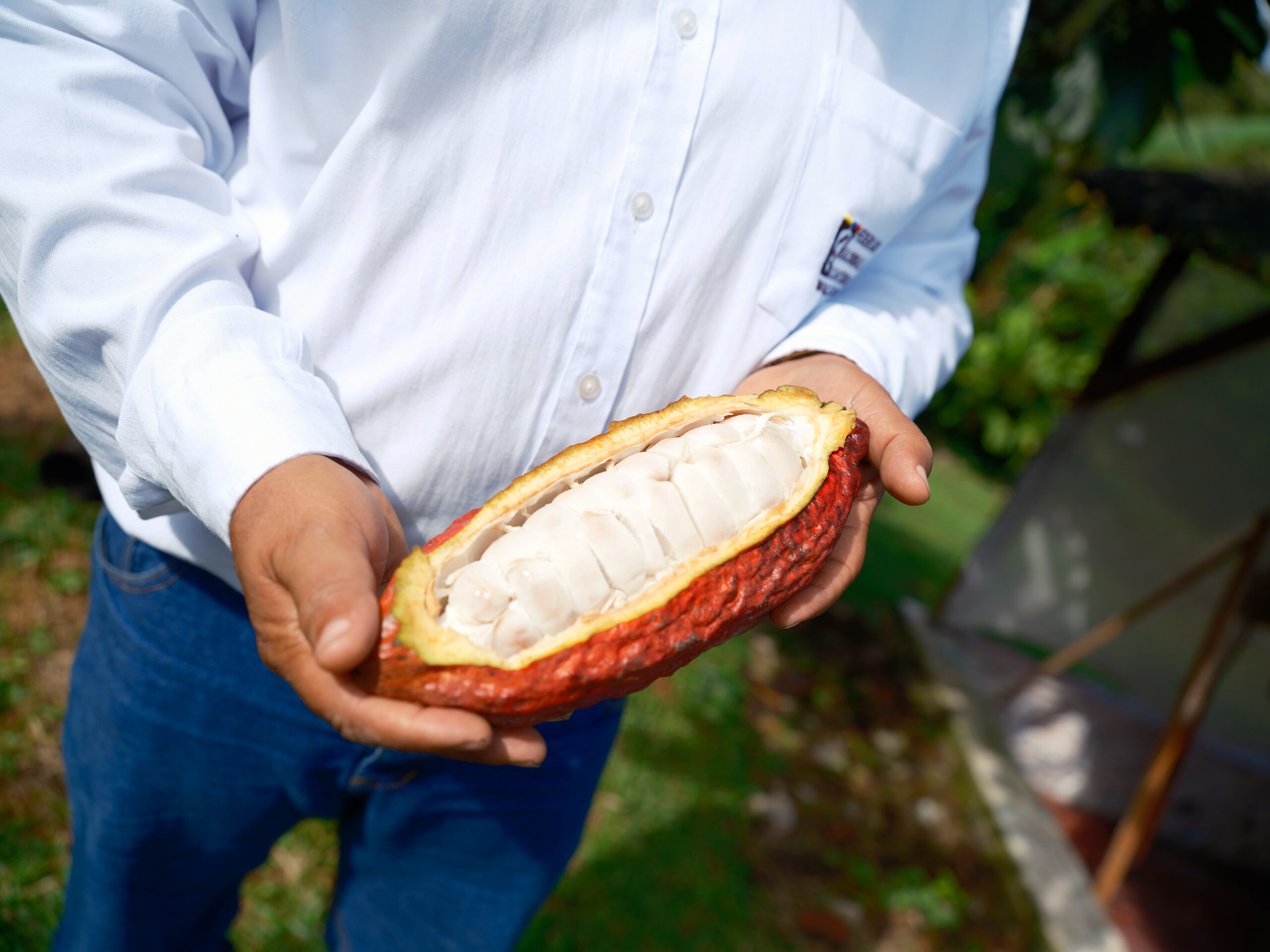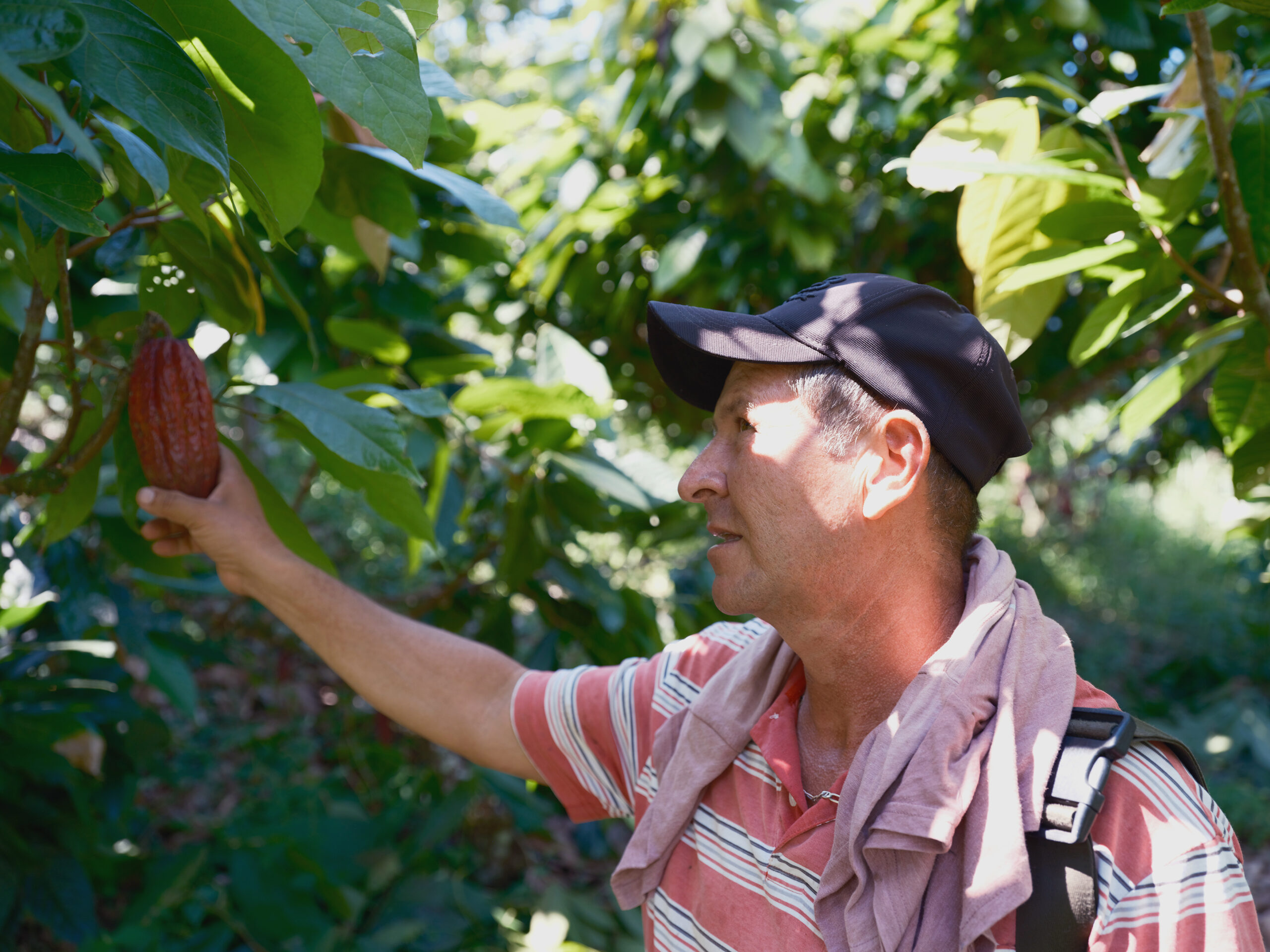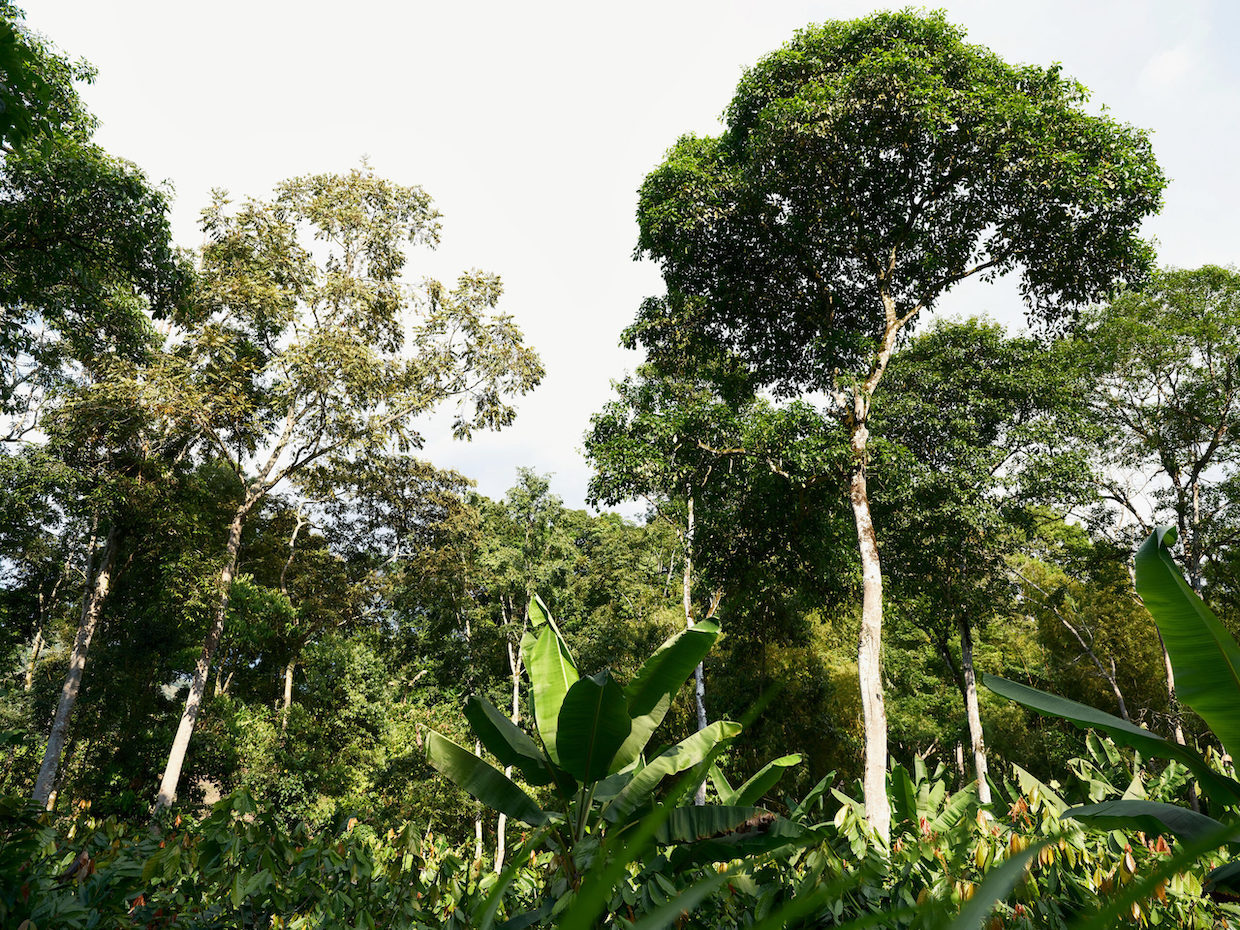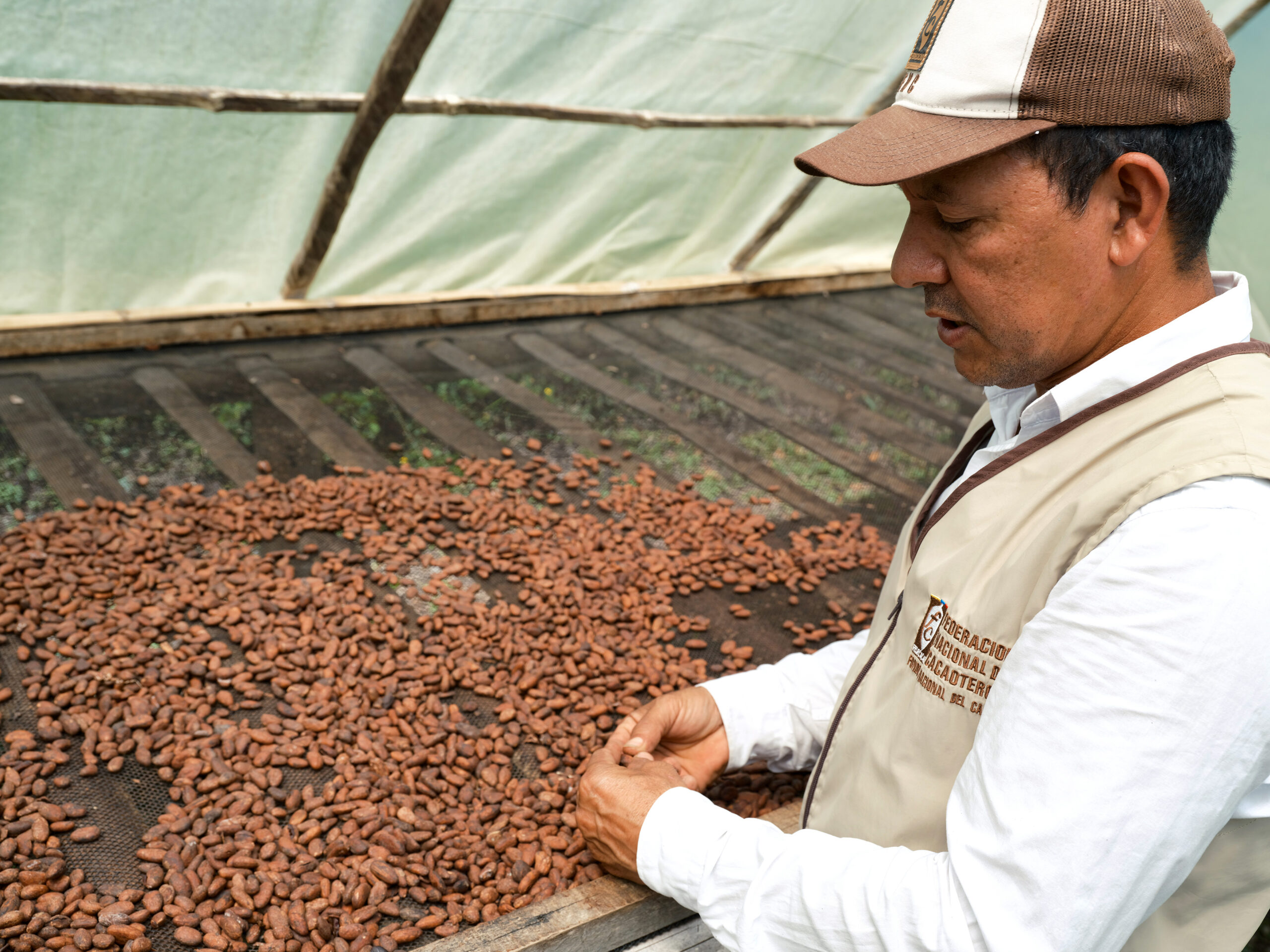- Due to rising temperatures and climate change, small-scale coffee farmers in Colombia are increasingly planting cacao.
- Cacao faces fewer immediate challenges compared to coffee, which is prone to pests and diseases, and can integrate well into agroforestry systems. However, agronomists warn that the switch to cacao can lead to clearing forests and increasing chemical inputs in order to expand existing plantations.
- Higher profits, the high prices of cacao in the market, and the increasing expenses needed to manage coffee crops are also factors pushing small-scale farmers towards the switch.
- Although coffee remains Colombia’s most important agricultural product, cacao is emerging not just as an alternative, but as a defining crop in Colombia’s evolving agricultural future, say agronomists.
RISARALDA, Colombia — “Before, anyone who wanted to grow cacao at 1,200 or 1,500 meters [3,900 to 4,900 feet] altitude was considered crazy,” says Orlando Quintero Gonzales, an agronomist in Colombia’s Eje Cafetero, or the Coffee Axis. “Today, with climate change reshaping agricultural landscapes, these altitudes could become optimal for this crop.”
As small-scale farmers move their coffee plants to higher elevations to escape rising temperatures, new crops like cacao are taking over the abandoned lands. Some are switching crops altogether to avoid declining yields. It’s redefining agricultural priorities and reshaping the local economy, says Quintero Gonzales, who also heads an experimentation center at the Federation of Cacao Growers (Federación Nacional de Cacaoteros). In the Eje Cafetero, Colombia’s emblematic coffee-producing region spanning the departments of Caldas, Risaralda, Quindío and Tolima, this transformation is already underway.
“We replaced 95% of the coffee plants on the farm with cacao when we took over five years ago because it’s easier to manage,” says Claudia Giraldo, a farmer in Risaralda, while climbing the steep hill to show her recently planted cacao trees.
Researchers warn that this shift in Colombia’s coffee belt is not just a temporary adaptation but a structural transformation. While coffee cultivation increased in 2024 with more resistant varieties and support, production has seen small increases and even declines in previous years due to droughts and El Niño. Overall, the cultivation area is down by about 100,000 hectares (247,000 acres) compared to 10 years ago. Cacao production, on the other hand, has been on a continuous rise since 2014, even beating national records with 73,000 tons produced in 2024.

Eliberto Arroyave Cano, an agronomist at FEDECACAO, part of the extension team shows one of the Cacao fruit grown on the FEDECACAO farm. Image © Victor Raison.
This changing climate has made mid-altitude lands, once dominated by coffee, ideal for cacao. But economics also plays a role in this switch, say researchers. Cacao prices have increased in the last year and some farmers find it too hard to manage the costs of controlling more pests on their coffee crops as temperatures get warmer.
“Historically, you would find coffee plantations at 1,200 m [3,900 ft.],” says Edilmer Figueroa, an agronomist at Cacao Hunter, a Colombian company specializing in high-quality chocolate. “Today, those same areas have shifted to 1,500 m [4,900 ft.] and above, leaving coffee farmers with fewer options at higher ground. At the same time, mid-altitude lands once dominated by coffee are becoming ideal for cacao.”
The International Panel on Climate Change (IPCC) confirmed Figueroa’s analysis, warning that, by 2050, up to 50% of current coffee-growing land could be lost due to rising temperatures and unsuitable growing conditions.
Cacao’s climate and pest resilience
Native to the Amazon, cacao was traditionally restricted to low-altitude, hot and humid climates. According to Figueroa, its natural resilience makes it well-suited to current climate challenges, unlike coffee, which suffers from heat stress and increased pest activity in warming conditions. “The deep-root system allows it to withstand droughts, while its resistance to certain diseases reduces the need for chemical inputs,” he says.
“Rising temperatures directly favor threats such as coffee leaf rust and coffee berry borer,” says Eliberto Arroyave Cano, agronomist at the National Federation of Cacao Farmers (FEDECACAO) in Pereira. “Producers must choose between increasing their expenses to combat these issues or relocating their plantations, which is not always feasible.”
One of the most significant challenges in coffee farming is the coffee leaf rust (Hemileia vastatrix), a fungal disease that has devastated plantations in Latin America over the past decade. While Colombia’s coffee research center, Cenicafé, has developed rust-resistant coffee varieties, the fungus continues to evolve. Rising temperatures also favor pests like the coffee berry borer (Hypothenemus hampei), which now thrives at higher altitudes.
By contrast, cacao faces fewer immediate threats in small-scale farms. It can also integrate well into some existing agroforestry systems that enhance biodiversity and promote sustainable farming practices.
“Cacao plantations often include timber trees and fruit trees like oranges and mandarins, which enrich the soil and promote biodiversity,” explains Eduard Baquero, president of the Colombian National Cacao Federation. “Fallen leaves create a humid layer that nourishes the soil and fosters life — cacao thrives in an ecosystem.”
The environmental costs and benefits
This natural integration minimizes the need for chemical inputs, making cacao a more environmentally sustainable crop. Farmers say that compared to coffee, cacao depends more on natural sensitive pollinators, thus limiting the use of fumigation. With coffee, fumigation is widely used to control pests like the coffee borer beetle.
“Cacao cannot [only] rely on fumigation because its pollination also depends on a tiny fly, the Forcipomyia,” says Arroyave Cano, adding that fumigation negatively impacts the fly. As a result, farmers use pruning techniques to maintain plant health, control pests and manage diseases, ensuring a more ecologically balanced approach to cultivation.
“A way to care for cacao is with pruning shears. You cut the fruit, the branch or the trunk, depending on the disease,” says Quintero Gonzales, inspecting his shears.
A common exception of pesticide use for such small-scale farming is in case of an attack of an ant called hormiga arriera roja, or the red leafcutter ant (Atta cephalotes), that harvests the leaves of the tree.
“But this is a targeted use of pesticide,” says Figueroa.
Most diseases require alternative methods. Fungal infections like monilia, which attack the fruit, and pests such as Xyleborus, a genus of beetle that infests trunks and branches, cannot be effectively managed with chemical treatments without harming the plant or affecting the harvest. To combat these threats, FEDECACAO promotes weekly tree monitoring, allowing farmers to detect infestations early on and remove infected parts before they spread.
Figueroa says that technology-driven cacao agriculture uses synthetic chemical fertilizers, such as urea, ammoniacal nitrogen or sulfur to compensate for the extraction of nutrients from the soil. These fertilizers are used according to the type of soil and following the guidance of an agro-engineer to favor the best development of the plant.
Figueroa adds that the real risk arises when people begin cultivating cacao without a proper understanding of its agricultural requirements — such as the appropriate type of fertilizer based on soil composition or the optimal spacing between trees to ensure healthy growth.
“With rising cacao prices fueling a profit-driven approach, some may be tempted to clear forests to expand plantations, which would lead to environmental degradation, others are using unfit fertilizers for the soil they have which, at best, would be inefficient but could also contribute to degrading the soil,” he says. Additionally, agronomic advancements like grafting clones are helping cacao improve both its yields and resistance to diseases.
“We typically use the roots of a hybrid cacao species called Caucasia 37 or 39 as the rootstock for hybrids like FEAR 5 or San Vicente 41,” explains Quintero Gonzales in the experimental center of FEDECACAO located in the mountains of Risaralda. “These hybrids are valued for their superior fruit quality and productivity. Once the rootstock matures, we perform cutting propagation, ensuring that these hybrids produce high-quality fruit while benefiting from a strong and resilient root system.”
As a result, cocoa cultivation is now expanding to intermediate altitudes between 800 and 1,200 m (2,620 and 3,940 ft.) and even higher in some regions, marking a significant shift in Colombia’s agricultural landscape.
“Unlike coffee, cacao continues to find new areas suitable for cultivation,” says Figueroa. “Each year, more land becomes available for cacao. It’s not relocating, it’s expanding.”
A profitable alternative?
Cacao ended 2024 with a historic boom, prices soaring to $12,900 per ton — an extraordinary 180% increase from the previous year. This spike was fueled by rising global demand and climate-related challenges in major cacao-producing countries like Côte d’Ivoire and Ghana that saw their production fall to historic lows.
“I can’t recall a time when cacao prices were higher than coffee,” says Figueroa.
Colombian coffee prices also soared to historic highs, the New York Stock Exchange saw prices reach $3.20 per pound by the end of 2024, the highest level since 1977, peaking at $3.56 on Jan. 27, 2025. This surge was largely driven by a diplomatic standoff between the U.S. and Colombia over proposed import tariffs. However, economists caution that this exceptional year for coffee does not indicate a sustainable trend. Colombia’s record output was primarily the result of an extreme drought in Brazil, the world’s top coffee producer, which experienced its worst dry spell in 70 years.
Despite these short-term gains, climate-related risks continue to threaten the long-term viability of coffee cultivation, pushing many farmers to consider alternatives such as cacao.
The price of cacao remains the key factor for producers. The record-high market shift in 2024 has strengthened Colombia’s position in the cacao industry, reinforcing its role as an emerging supplier of high-quality beans and attracting new producers to shift their cultures to cacao.
“Globally, about 95% of cacao production is classified as standard cacao, while only around 5% is considered fine or aromatic cacao — and that is the category Colombian cacao falls into. The year before last, Colombia exported nearly $130 million worth of cacao. Last year, while we were still awaiting the final figures, projections indicated that we likely surpassed $200 million in exports, a historic record,” says Baquero.
For Claudia Giraldo and John Freddy, owners of a cacao farm, Los Limones, in Risaralda, high production costs were a key factor in their decision to transition from coffee to cacao.
“Coffee requires a lot of chemicals to fight pests like the coffee borer, and the harvests demand labor we can’t afford,” says Freddy.
Unlike coffee, which must be harvested at peak ripeness, cacao pods can remain on the tree for up to a month without jeopardizing the harvest. This flexibility is crucial in areas where seasonal labor shortages affect harvest cycles.
Some small-scale farmers who had avocado crops are also increasing the amount of cacao they grow or making a switch altogether. Euperfadis Cardenas Vargas, who manages the 18-hectare (44.5-acre) Finca Villa María in the mountains of Risaralda, says he is considering gradually switching his 16 hectares (40 acres) of avocado trees and increasing his cacao crops.
“Managing avocado is far more expensive due to the large amount of chemicals it requires. Cacao, on the other hand, is much more self-sufficient. You just need to monitor it, and even if a pest or disease appears, it won’t wipe out the entire harvest,” he says.
Coffee still remains Colombia’s most important agricultural product, and it will stay that way for a long time, says Baquero. But as small-scale coffee farmers face increasing climate pressures, he says, “cacao is emerging not just as an alternative, but as a defining crop in Colombia’s evolving agricultural future.”
This article was originally published in Mongabay. It is published here under a Creative Commons Attribution-NoDerivatives 4.0 International License.
Daily Coffee News does not engage in sponsored content of any kind. Any statements or opinions expressed belong solely to the authors and do not necessarily reflect the views of Daily Coffee News or its management.
Comments? Questions? News to share? Contact DCN’s editors here. For all the latest coffee industry news, subscribe to the DCN newsletter.
Related Posts
Victor Raison
Victor Raison is a French journalist and photographer born in Switzerland. After graduating with a master’s degree in literature from La Sorbonne University and a master’s degree in photojournalism at the London College of Communication, he started working as a photographer for Les Nouvelles Calédoniennes, New Caledonia’s local newspaper. He then settled in Colombia as a freelance photographer and journalist. He received a Fulbright scholarship to pursue a master’s in journalism at Columbia University during the pandemic.
Tags: agroforestry, cacao, climate change, Colombia, FEDECACAO, Risaralda, The International Panel on Climate Change, Victor Raison



























